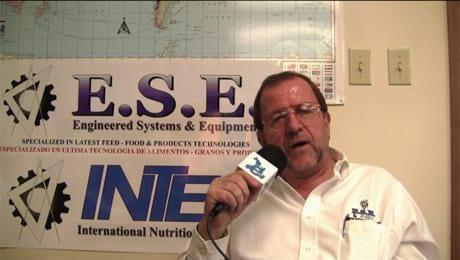Durability of pellet feeds in water
I have been happier the few minutes spent here.
We desire more discussion on the durability of pellet feeds in water. Durability of 2 hours still floating is much desired in the fish industry.
Please, how achievable. Is it possible now?
I will like to get in this discussion. Extrusion Cooking Systems in feed production for fish, chicken and other animals.
How finely pulverized should ingredients be before extrusion?
There are many factors to discuss on extrusion of fish feeds and as an option chicken feeds. Floating need approx 20 % starch normally and enough shear and pressure in the extruder to achieve expansion. More shear and more pressure equals to greater floatability and pellet strength. Preconditioning prepares the material for the extruder and too much water, which can act like oil which reduces expansion. Not enough water and wear increases and it is harder to cook and capacity is also reduced.
Chicken feed can be made by extrusion but it is usually higher or heavier in density. Like sinking feeds. Should be noted practically all chicken feeds are made with a pellet mill not extrusion. Pellet mills run at lower moisture and no drying is used just cooling. So if you wish to make chicken feed you can but it is different then the products on market now. Seems you might have an extruder and do not have a pellet mill thus simply run it like a heavier density fish feed if heavily density is needed. Normally lower starch is needed but you will not do this as normal chicken formulas will be higher in starch. No problem if you can control the process. Not knowing what you have makes it a guess what to do so at this point make it like floating fish feed and have a lighter density but you can make durable pellets.
As for 2-hour floating feeds, normally 5 minutes is fine as you normally only feed what the fish can eat in 5 minutes when using floating feed. One of the main reasons floating feed is so popular. You can see what and how they eat. Longer seems to be wasteful and you should feed less but feed more often. A floating feed should have the durability for feeding system and shipment or handling of the feed. All of these topics tie together when the actual situation is defined. Durability, floating, density, etc. The beautiful thing about extrusion. Is if you have a controllable system the rules can be followed and products produced accordingly. Rule: 1 raw material formula is defined and rule 4: the final product characteristics are defined and determine how rule 2 and 3 are planned for the product, 2 the equipment used dies etc. and the method to control the machine or running conditions.


Pre- Pelleting Process in Aquafeed Production Josef Barbi (E.S.E. & Intec)
For better PDI and water stability more than 2 hours pellet Binder is the better option.
Binder like poly methalocarbamide can be used ARCL Organics.
I guess you feel additives are better if you sell additives. I for one prefer to be sure the system is as it should be and then and only then additives if needed. Could be in this case as I do not know the system. At 55 kegs per hour doubt is very complex and also doubtful additives would assist. Who can tell for sure?










